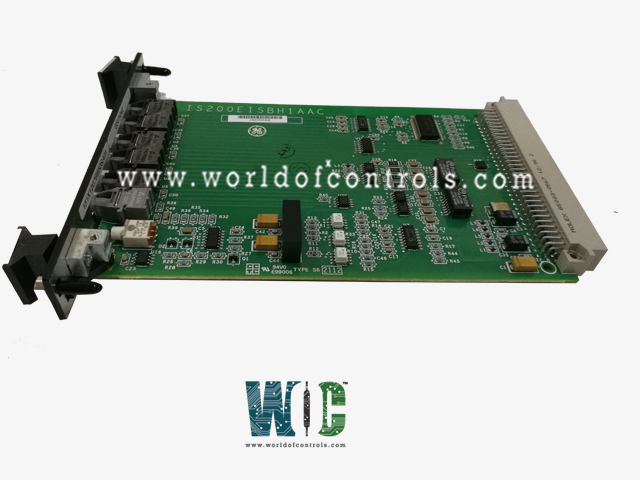
World Of Controls understands the criticality of your requirement and works towards reducing the lead time as much as possible.
IS200EISBH1AAB - Exciter ISBus Board is available in stock which ships the same day.
IS200EISBH1AAB - Exciter ISBus Board comes in UNUSED as well as REBUILT condition.
To avail our best deals for IS200EISBH1AAB - Exciter ISBus Board, contact us and we will get back to you within 24 hours.
SPECIFICATIONS:
Part Number: IS200EISBH1AAB
Manufacturer: General Electric
Series: EX2100
Product Type: Exciter ISBus Board
Number of channels: 16
Relay Contact Rating: 10A
Power Supply: 24V DC
Communication Protocols: Modbus
Signal Input Voltage Range: 0–10V DC
Relay Switching Current: Max 10A
Mounting Type: DIN rail
Output Resolution: 12-bit
Output Impedance: 10 Ohm
Analog outputs: 0-20 mA
Size: 17.8 cm wide x 33.02 cm
Operating Temperature: -20°C to +70°C
Synchronization Accuracy: ±0.01 Hz
Technology: Surface Mount
Repair: 3-7 Day
Availability: In Stock
Country of Origin: United States
Manual: GEI-100454
FUNCTIONAL DESCRIPTION:
IS200EISBH1AAB is an Exciter ISBus Board manufactured and designed by General Electric as part of the EX2100 Series used in the GE Excitation Turbine Control Systems. The Exciter ISBus Board (EISB) is a special communication board for the M1, M2, and C controllers. It receives and transmits fiber-optic feedback signals and transmits them over the control backplane to the DSPX controller and also communicates between the DSPX and the tool and keypad ports using RS-232C through the backbone connector. In addition, for redundant exciters, EISB contains ISBus interface electronics. ISBus is a GE proprietary communications interface, used here to transfer data among the exciter's M1, M2, and C controllers. EISB is a single-slot, 3U-high module in the control rack under the DSPX. From fiber-optic connectors on the front panel, it accepts current and voltage signals from the generator field (and from the Exciter if required) using EDCF boards. It receives and transmits signals to the Ground Detection module.
OPERATION:
CONNECTORS:
The board front panel has six fiber optic connectors for receiving and transmitting variable frequency signals as follows:
WOC has the largest stock of OEM Replacement Parts for GE Excitation Turbine Control Systems. We can also repair your faulty boards and supply unused and rebuilt boards backed up with a warranty. Our team of experts is available round the clock to support your OEM needs. Our team of experts at WOC is happy to assist you with any of your automation requirements. For pricing and availability on parts and repairs, kindly contact our team by phone or email.
What is the purpose of the Exciter ISBus Board?
The Exciter ISBus Board is a critical component in turbine generator excitation systems, enabling communication, data exchange, and control between the excitation system and other subsystems. It ensures real-time signal processing, fault monitoring, and synchronization to maintain generator stability and efficiency.
How does the Exciter ISBus Board support communication?
The board supports industrial communication protocols, such as Modbus or Ethernet, to facilitate seamless interaction between the excitation system, control systems, and other connected devices. This ensures efficient data transmission and command execution.
What types of faults can the Exciter ISBus Board detect?
The board continuously monitors system performance and can detect various faults, such as communication errors, voltage irregularities, synchronization issues, or hardware malfunctions. It generates alerts and logs diagnostic information for quick resolution.